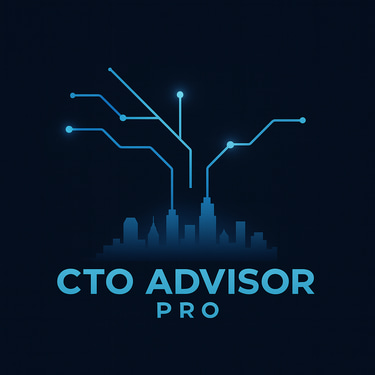Modernizing Legacy Systems: Why a Fractional CTO Could Save You Millions
How expert guidance on-demand can help you future-proof your infrastructure without burning your budget.
8/3/20253 min read


It always starts with a warning sign.
Maybe it’s a delayed product launch, spiraling IT costs, or a critical outage that halts customer transactions. Maybe your team can’t even find developers who understand the 20-year-old codebase anymore. Or perhaps it’s just a creeping awareness that your competition is innovating faster while you’re stuck maintaining what feels like digital duct tape.
Whatever the trigger, the realization is the same:
Your legacy systems are holding your business back.
But knowing you need modernization and actually doing it are two very different things.
That’s where a Fractional CTO can become your most valuable asset—especially if you’re aiming to avoid the million-dollar missteps that often come with modernizing complex, aging systems.
Legacy Systems: The Hidden Drain on Innovation
Most companies don't want to keep outdated technology in place. But the reality is, legacy systems often carry years of business logic, compliance constraints, and hidden dependencies that make them difficult to untangle. They power critical processes—from billing to inventory to customer data—and replacing them can feel like swapping out an airplane engine mid-flight.
The result? Organizations limp along with:
Bloated IT budgets due to inefficient, outdated systems
Increased security vulnerabilities
Sluggish development cycles
Low team morale (nobody wants to work on ancient code)
Poor customer experience from outdated UX or downtime
According to a recent Forrester report, large enterprises spend up to 70% of their IT budgets just maintaining legacy infrastructure. That’s money not being invested in innovation, customer experience, or growth.
Modernization is Complex—and That’s the Problem
Modernizing a legacy system isn’t as simple as “lift and shift” to the cloud. It requires deep technical expertise, a clear architectural vision, a practical roadmap, and—most critically—business alignment.
The common failure points?
Misaligned stakeholder goals
Technical overreach (too much, too fast)
Poor vendor selection or tool sprawl
Lack of governance over data and services
Teams that are ill-equipped or stretched too thin
Without strong technical leadership at the strategic level, modernization projects often balloon in cost and time—or worse, fail completely.
Why a Fractional CTO Is the Smart Choice
Hiring a full-time CTO to spearhead modernization may not be viable for many mid-market firms, nonprofits, or even fast-moving startups. That’s where a Fractional CTO enters the equation.
Think of it as getting C-suite firepower without the full-time expense.
A fractional CTO brings:
Hands-on experience modernizing complex systems
Vendor-agnostic guidance on platforms, tools, and cloud strategy
Tailored roadmaps that align technology transformation with business outcomes
Cross-functional collaboration between engineering, product, finance, and ops
Change management expertise to help your team adapt and succeed
And because they’re not full-time, you get this strategic leadership for a fraction of the cost—often 60-75% less than a traditional CTO hire.
How Fractional CTOs Save (and Even Make) You Money
1. Avoiding Scope Creep & Rework
A strong modernization strategy from day one means less backtracking, fewer missed requirements, and a more predictable budget.
2. Smarter Cloud Migrations
Rather than just rehosting legacy apps in the cloud, a fractional CTO can identify cost-optimized migration paths—whether that’s refactoring, replatforming, or replacing with SaaS.
3. Tech Debt Reduction
Modernization is the ideal time to retire redundant systems and simplify your stack. That saves on licensing, infrastructure, and maintenance costs over time.
4. Talent Optimization
A fractional CTO can identify where to retrain in-house staff versus where to outsource, avoiding overhiring or paying premium rates for short-term roles.
5. Risk Mitigation
They’ll put the right security and compliance guardrails in place from the start, helping you avoid fines, breaches, or reputational damage.
6. Revenue Growth Through Enablement
Modern systems don’t just save money—they unlock new features, faster releases, and better customer experience. That translates directly to top-line growth.
Real-World Example: From 7-Figure Drain to Lean Machine
A U.S.-based financial services company faced mounting pressure from regulators and customers alike due to an outdated monolithic platform. A full rebuild was estimated to cost $6M+ over 24 months.
They brought in a fractional CTO to assess.
Instead of greenlighting the rebuild, the CTO designed a modular modernization approach that prioritized decoupling high-risk systems and transitioning them to scalable microservices. With phased delivery, they achieved 80% of the functionality at less than half the cost, within 12 months.
Even better? Their internal team gained confidence and capacity as the CTO upskilled them during the process.
The Bottom Line: Start Smart, Not Big
Modernizing your legacy systems is no longer optional—it’s foundational to competing in today’s market. But it doesn’t have to start with a massive replatforming or a multi-million dollar budget.
By partnering with a fractional CTO, organizations can move faster, spend smarter, and reduce risk, all while future-proofing their technology backbone.
This isn’t just about updating code.
It’s about reclaiming your company’s ability to adapt, scale, and lead.
Ready to Modernize Without the Million-Dollar Mistakes?
Let’s talk about how a fractional CTO can guide your journey—on your terms, at your pace.
Let's chat!

We respect your privacy. Your information will never be shared.
Expert Advice. Guaranteed Results. No fluff.
Fractional CTO Support | CTO Advisor Pro
20+ Years | $1.2B+ in Value Delivered | 250+ Clients
Transform
contact@ctoadvisorpro.com
© 2025. All rights reserved.
Reston, Virginia, USA
